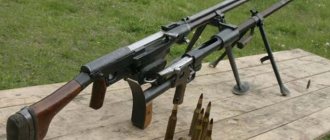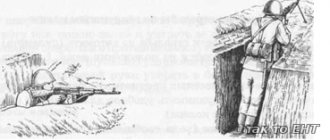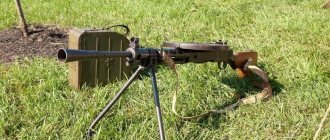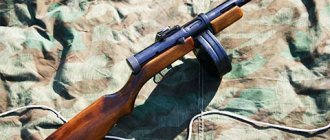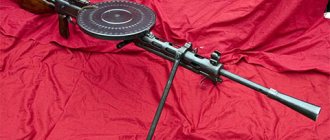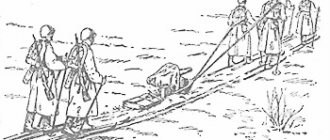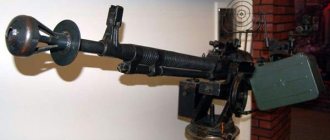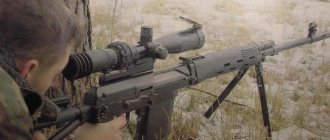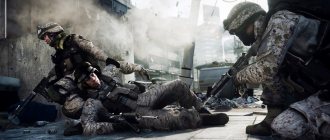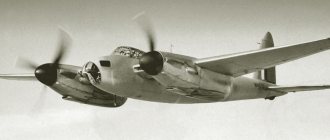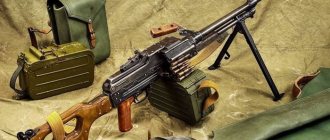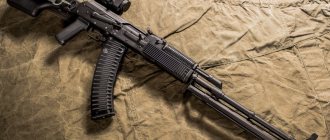Childhood and youth
The childhood years in the hero’s biography can hardly be called cloudless. Vasily Alekseevich was born on January 2, 1880 in Tula. The father was a hereditary gunsmith, the forge was located right next to the house where the family lived. Until 1887, his grandfather Nikolai Mironovich was engaged in educating the child, and after the death of the old man, Vasily was sent to a parochial school.
Master gunsmith Vasily Alekseevich Degtyarev while serving in the weapons workshop at the officer rifle school in Oranienbaum.
Published by Anton Kuzmin Saturday, October 11, 2014
Vasily Degtyarev in his youth
The teenager stayed here for only 3 years, as his parents did not have enough money to pay for his studies. Due to the difficult financial situation of the family, Degtyarev was forced to work from the age of 11. The future designer was hired at the Tula Arms Factory, where he worked his way up from an apprentice controller to a gunsmith.
When the young man turned 17, his father died, and Vasily had to support his relatives. In addition to his main factory activities, he took on private orders. To optimize production, the worker improved the lathe. Soon the family's breadwinner was sent to military service.
Design Features
Assembled version and individual components
The RPD light machine gun is designed on an automatic basis using the principle of removal of powder gases. The piston is designed for a long stroke, the gas regulator is located under the barrel. The cartridges were ejected downward. The fire was conducted from a removable bipod, however, due to frequent losses, in the DPM it became non-removable.
The Degtyarev infantry machine gun had a thin-walled, removable barrel. During prolonged shooting, it often overheated and failed. Replacement was carried out using a special key and hand protection from burns. The recoil spring also overheated and failed, which was considered one of the few disadvantages of the dp.
The machine gun was powered by round disks with cartridges, “plates”. The cartridges in them were located in a circle, with bullets towards the center, which ensured the reliability of their delivery. However, the mass of empty magazines, the difficulty of transportation and the likelihood of damage reduced the convenience and effectiveness of using these weapons.
Degtyarev’s machine gun was supplemented with the following components:
- a composite cleaning rod designed for cleaning the barrel;
- screwdriver wrench for working with components;
- cranked wiper for cleaning the chamber through the upper receiver window;
- device for cleaning gas paths;
- drifts for pushing out axles and studs;
- extractor for cleaning weapons from detached cartridge cases.
All tools were stored in a special box or bag. During and after the war, work was carried out to create a silencer, but it was never completed. All developments, including mufflers for the new RP-46, were considered inappropriate.
Career
During his service, Vasily was assigned to a rifle unit located in Oranienbaum. During the exercise, a local weapons mechanic was unable to repair a malfunctioning machine gun. Degtyarev volunteered to solve the problem and successfully dealt with it. Thanks to this, the young mechanic was transferred to the weapons workshop at the rifle officer school.
The principle of operation of the equipment used there was already familiar to the designer: at the plant in Tula, the young man worked on similar machines. This allowed the young man to not be inferior in quality to the products made by experienced craftsmen. Vasily learned quickly, and soon the talented gunsmith was trusted with complex machine gun breakdowns.
Later, Degtyarev was assigned to form the first machine gun teams. Based on these groups, the first machine gun school in the Russian Empire was then founded. In 1905, at the end of the Russo-Japanese War, designers from different countries arrived in Oranienbaum by invitation with samples of their own work. Vasily had the opportunity to get acquainted with world practices in the design of small arms.
In 1905, when his term of service ended, the Tula resident remained working at the workshop as a civilian mechanic. A year later, under the leadership of Vladimir Grigorievich Fedorov, he began work on designing automatic weapons based on the Mosin rifle. The young man plunged into the project and developed several samples.
Published by Jacob Goldberg Monday, January 2, 2017
Gunsmith Vasily Degtyarev
However, time has shown that the idea of processing has no prospects, so Fedorov decided to abandon it and try to create his own model with a caliber of 7.62 mm. The master's apprentice also helped in the experiments, but the rifle did not pass the tests and required modifications. The designers continued their work, and in 1912 the presented weapon was recognized by the commission as successful.
Even after this, engineers did not stop improving the characteristics of the model, but the First World War slowed down the work process. At the beginning of 1918, Vladimir Fedorov was sent to the Kovrov Machine Gun Plant with the goal of leading the production of machine guns. Vasily Alekseevich also went to the new place with him. In the period from 1921 to 1925, the Tula resident was engaged in the development of models of light machine guns in the design bureau.
The designer’s scope of work also included the creation of weapons to equip tanks and aircraft. Degtyarev's inventions were unified with the teacher's machine gun to simplify their serial production. In 1923, Tula began creating a new light machine gun, which underwent field testing for several years. In 1927, the model, called DP (Degtyarev Infantry), was approved for factory production.
Later, on its basis, the DA aircraft model and the DT tank model appeared. In 1931, Vasily Alekseevich presented a new work - DK (Degtyarev large-caliber). This weapon surpassed the one available at that time in functionality, armor penetration, and also turned out to be lighter in weight. Later, the design was modified by engineer Georgy Semenovich Shpagin, and the DKSh began to be produced in 1939 for arming the Red Army.
Since 1934, the Degtyarev submachine gun (PPD-34) was produced, and in 1939 the production of a heavy machine gun (DS-39) was put on production lines. On the day of his 60th anniversary, Vasily Alekseevich received the title of Hero of Socialist Labor; before that, the only recipient of the award was Joseph Stalin, who personally congratulated the designer.
In the same year, the engineer, by decision of the Council of People's Commissars, became a Doctor of Technical Sciences, without defending a dissertation, on a set of inventions. In the fall, the master headed the design bureau at the Kovrov plant, and in March 1941 he was awarded the Stalin Prize for the creation of new models of small arms.
Father of the PTRD and the Russian machine gun: The dream and life of Vasily Degtyarev
January 2 marks the 140th anniversary of the birth of the brilliant Russian weapons designer
The turbulent 20th century gave Russia a whole galaxy of outstanding gunsmiths. One of them is Vasily Alekseevich Degtyarev, the creator of the famous machine guns and anti-tank rifles, which made it possible to stop fascist tanks on the approaches to Moscow.
The whole life of this extraordinary man, who was called a genius during his lifetime, is the embodiment of serving a dream. And the abbreviations of the weapons he created - PTRD, DP, DShK - during the war and after it turned into household names, comparable only to the Kalashnikov assault rifle.
Grew up with a rifle in my hands
The legendary designer was born back in the 19th century - January 2, 1880 (December 21, 1879, old style). At the same time, it was apparently destined for Vasily Alekseevich to become a gunsmith, because his place of birth was Tula, a world-famous city of gunsmiths. Moreover, the boy’s ancestors on the male line were hereditary masters. Vasya passed on his love and interest in this business primarily from his grandfather, blacksmith Nikolai Mironovich, who from childhood took his grandson with him to work.
Like many boys of that time, Vasily early found himself in charge of the family. When he turned 11, his beloved grandfather died and his father was terminally ill. And Degtyarev had to go to work at the plant. Of course, to the Tula Armory.
Then, in 1891, the company was just starting to produce a product that very quickly became a cult item in the Russian army. This is the famous three-line rifle, the Mosin system rifle. Sergei Ivanovich Mosin himself came to the plant to supervise production, and Degtyarev was lucky enough to meet him. It was then that Vasily realized that his dream was to be a weapons inventor.
Sergei Ivanovich Mosin himself came to the plant to supervise production. Photo: Mikhail Rogozin / Globallookpress
By the age of 17, the young gunsmith knew how to make by hand any part of his favorite “moskin.” At 20 he joined the army; Moreover, they were called up then not for a year, as now, but for a long five years. True, here too fate seemed to guide Degtyarev: he was sent to serve in Oranienbaum, where an experimental weapons workshop was located.
Once, when the soldiers were participating in shooting, the Maxim machine gun handed to them malfunctioned in the middle of the exercise. Degtyarev was not at a loss and repaired the weapon right at the training ground. The command appreciated the recruit’s talent, and almost the next day Vasily was transferred to work in the workshop. He never returned to duty.
Five years of service became real weapons universities for Degtyarev. He managed to thoroughly study the structure of almost all types of small arms - both foreign and domestic. I met the famous American John Moses Browning - he brought his automatic rifle to Russia, hoping to conclude a lucrative contract. True, the much-vaunted rifle failed during testing. And, of course, Degtyarev repaired it.
Friendship is the engine of progress
In 1906, an acquaintance occurred in the life of Vasily Alekseevich, which largely determined his future path in life. Fate brought him together with an artillery engineer, army captain Vladimir Fedorov, a student of Mosin. He brought the drawing to the master and asked him to make a new pointed bullet. Degtyarev coped with the task brilliantly; very quickly he and Fedorov became close friends, and then comrades in a common cause.
Fedorov’s goal then was to create a new type of weapon - an automatic rifle based on the Mosinka. Degtyarev enthusiastically joined the work, and a few months later the first Russian automatic weapon saw the light of day. But the rifle turned out to be unsuitable for mass production: it turned out to be very cumbersome.
Meanwhile, Degtyarev and Fedorov came up with a new, unparalleled design, and in 1907 they began work on a new machine gun. A year later, the weapon was successfully tested. For the masters themselves, this was a step forward: they were invited to the Sestroretsk arms factory. But Nicholas II again ordered that their machine gun not be put into production. The argument sounded a little strange: they say, “the soldiers don’t have enough ammunition for automatic shooting.”
From timelessness to finest hour
On July 28, 1914, World War I began, and the friends temporarily had to give up inventing. Fedorov was sent to Japan to deal with arms purchases. Degtyarev was left at the plant as an ordinary foreman.
By this time he already had his own family, a wife and four children. There were only short periods of free time left for my favorite activities and self-education. But the gunsmith did not give up his dream.
Three years have passed. A revolution broke out in the country. Degtyarev, like his comrade-in-arms Fedorov, took the side of the Soviets; as a result, Fedorov was appointed to head the military plant in Kovrov, Vladimir region, and Degtyarev was offered to head the experimental workshop there.
The leadership of the Red Army also reacted with great interest to their joint brainchild, the machine gun. Quite soon, the weapon went into mass production, and the military appreciated it. In 1922, Fedorov was awarded a substantial state prize for it. And the gunsmith acted like a true friend: he gave exactly half the amount to Degtyarev, and with this money he bought a house for his large family.
And two years later, an order came to the workshop: to develop a light domestic light machine gun. People's Commissar of Military Affairs Mikhail Frunze himself was appointed curator of the project. Degtyarev understood: here it is, his finest hour.
In the fall of 1924, he was already taking his new creation to Moscow for testing. The acceptance of weapons was carried out by the State Commission of the Main Artillery Directorate; It was led by the famous military leader Semyon Budyonny. He personally tested the Degtyarev machine gun.
Semyon Budyonny. Photo: Globallookpress
And it had to happen that the firing pin of the prototype broke right during shooting! Because of such shame and failure, the inventor was not himself. He vowed to completely and completely remake the structure that “framed” him. As a result, a fundamentally different machine gun was born de facto. It took another two years to create it. However, when the time came for testing, it became clear that the new weapon was worth the time spent on it.
The perfect weapon
Relatively light - just over 9 kilograms - the Degtyarev machine gun turned out to be an almost ideal weapon. The interchangeable magazine, designed for 47 rounds, was made in the shape of a pancake and allowed for camouflage. Dirt, water, earth, and dust falling on the mechanism and even inside it did not in the least interfere with its operation. The weapon's rate of fire was 600 rounds per minute, and the bullet fired from the barrel retained its lethal force at a distance of up to 2.5 km. Moreover, the machine gun could also accept heavy bullets of the 1930 model, with which the striking distance increased to 3.5 km, so that the DP (the letters printed on the weapon casing meant “Degtyarev Infantry”) could also be used against aircraft.
Serial production of the legendary machine gun began in February 1927. Its production lasted 18 years, during which time 795,000 DP were produced.
Light machine gun Degtyarev (model 1940). Photo: FotograFFF / Shutterstock.com
And by 1938, Degtyarev finally secured his fame as a brilliant designer, creating, together with his student Georgy Shpagin, a 12.7-mm heavy machine gun, which surpassed all foreign analogues. The sighting range of the DShK exceeded 3.5 km; it easily penetrated steel armor from a distance of half a kilometer, firing one and a half thousand rounds per minute.
Tomorrow there was a war
Doctor of Technical Sciences Vasily Degtyarev celebrated his 60th birthday by listening on the radio to a decree awarding him the Order of Lenin and a prize of 50 thousand rubles. He also became the second person in the country after Joseph Stalin to be awarded the title of Hero of Socialist Labor.
There was a year and a half left before the start of the Great Patriotic War...
During the war, the Kovrov Mechanical Plant produced 9,000 Degtyarev-Shpagin heavy machine guns. They were used in all branches of the military; Moreover, the DShK turned out to be practically the only weapon that, having been created before the war, is in service to this day and is involved in armed conflicts.
However, military historians consider the real feat of Degtyarev and his colleagues at the plant to be the creation of an anti-tank gun - the PTRD. It was developed literally in a few weeks in 1941, when the fascist tank wedges were rushing deep into the USSR, towards Moscow. Degtyarev's anti-tank rifle, whose armor-piercing incendiary 14.5-mm bullet with a hardened core penetrated the frontal armor of any tank from half a kilometer, became a salvation for the Red Army. With it, our soldiers could resist the enemy's armored armadas.
Having started on September 22, 1941, the production of PTRD at the Kovrov plant was carried out around the clock. Degtyarev himself worked at one of the machines along with other workers. During the Great Patriotic War, 281,111 anti-tank rifles rolled off assembly lines, with the help of which Soviet soldiers destroyed countless amounts of Nazi ground combat equipment.
For his services in strengthening the country's defense capability, Degtyarev was awarded the Order of the Red Star and the Red Banner of Labor, the Order of Suvorov I and II degrees and many medals. Four times he became a laureate of the Stalin Prize.
The famous designer died on January 16, 1949 and was buried at the St. John the Military Cemetery in Kovrov. As for the weapons he created, they were used for many decades in almost all hot spots on the planet, from the Colombian jungle to the Afghan mountains.
The Great Patriotic War
At the beginning of the Great Patriotic War, the designer developed a sample of the Degtyarev anti-tank rifle, for which he again received the Stalin Prize in 1942. The engineer also modified the DS-39 machine gun, but the commission recognized the superiority of the SG-43 model, presented by Pyotr Goryunov.
Today, January 2, was born an outstanding Russian and Soviet gunsmith, winner of four Stalin Prizes, Hero...
Published by Evgeny Spitsyn Wednesday, January 1, 2022
Major General of the Engineering and Technical Service Vasily Degtyarev
In 1944, Vasily Alekseevich was creating a new model of the RPD. In November of this year, the designer was awarded the rank of major general of the engineering and artillery service.
Machine gun "family"
During exercises and combat operations, the machine gun was serviced by two people: the shooter and his assistant, who carried a box with 3 disks.
For the first time in combat conditions, the Degtyarev machine gun was used during the conflict on the Chinese Eastern Railway in 1929. After this, the DP participated in the war in Spain, in the battles at Khalkhin Gol, and in the Soviet-Finnish war of 1939/1940.
Based on the experience of combat use, the designers modified the machine gun, although its system did not fundamentally change. Based on the Degtyarev machine gun, several modifications were created that were equipped with tanks, aircraft, combat boats, etc.
Machine gun designed by Vasily Alekseevich Degtyarev, model 1927, from the collections of the Central Museum of the Armed Forces of the USSR. Photo: RIA Novosti/V. Shiyanovsky
Memory
In 1954, a monument to the designer by Matvey Manizer was erected in Kovrov, and a bust of the gunsmith and memorial plaques appeared on the territory of the plant where Degtyarev worked. The name of the master was given to the city high school, the Culture and Recreation Park and other objects. For the 100th anniversary, the USSR Ministry of Communications issued a postal envelope with a portrait of a Tula resident. The image of Vasily Alekseevich also appeared in the film “Kalashnikov”.
The principle of operation of a machine gun
Operating principle of the DP
The operating principle of the Degtyarev machine gun is based on magazine feeding and removal of powder gases. The weapon design allowed up to 80 rounds per minute. However, given the overheating of the barrel and the recoil spring, firing was often limited to short bursts.
The firing principle is based on the following mechanisms:
- when the firing pin moves, the lugs move to the sides, locking the barrel due to the movement of the bolt frame;
- after the shot, the gas piston ensures the rear movement of the bolt frame, then the firing pin is pulled back and unlocks the bolt.
When shooting prone, a long ribbon was attached to the machine gun at both ends. The soldier pulled it with his foot, pressing the weapon to his shoulder, which increased shooting accuracy by reducing vibrations from recoil.
Awards
- 1932 - Order of the Red Star
- 1933 - Order of Lenin
- 1940 - Hero of Socialist Labor
- 1940 — Medal “Hammer and Sickle” No. 2
- 1940 - Order of Lenin
- 1940 — Academic degree of Doctor of Technical Sciences without defending a dissertation
- 1941 - Stalin Prize, first degree
- 1942 - Order of the Red Banner of Labor
- 1942 - Stalin Prize of the second degree
- 1944 - Order of Suvorov, II degree
- 1944 - Order of Lenin
- 1945 — Order of Suvorov, 1st degree
- 1946 - Stalin Prize of the second degree
- 1949 - Stalin Prize, first degree
